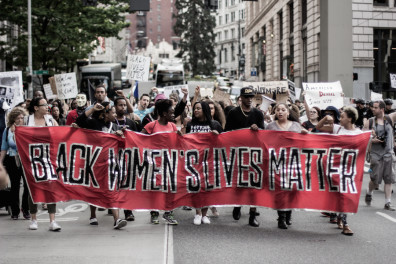LGBT; Sexual Stigma and Gender Identity
mark.collins
When it comes down to it, the essence of the LGBT movement is about everyday individuals wanting the same chance as everyone else. Whether it’s the ability to earn a living, be safe in one’s community, serving ones country or the biggest thing of all; being with the one you love.

Picture source: http://d35brb9zkkbdsd.cloudfront.net/wp-content/uploads/2012/10/Employment-Discrimination-Maps.png
Basic fundamental opportunities everyone should have, and yet they are halted if not stalled. On a federal level companies that have contracts with the government are now prohibited from firing or discriminating against employees based on their sexual orientation or gender identity due to an executive order President Obama signed in June of 2014 (Bendery). However, 33 of the 50 states have no state-level gender identity protection, this meaning in over half of the U.S it is perfectly legal for employers to fire employees based solely on their gender identity. Nor is there a state-level protection for sexual orientation in 29 of the 50 US states. The overhauling idea that merit is null void if they happen to find your gender identity (i.e., transgender) or sexual orientation (i.e., lesbian, gay, bisexual) to be that of conflicting alignment.
In some ways it’s quite flattering to think that what someone does in the privacy of their bedroom carries so much weight in the public sphere. And yet one must ask the question, why does it in fact carry so much weight?

Source: http://itspronouncedmetrosexual.com/2015/03/the-genderbread-person-v3/
Prevailing argument is that sexual preference shouldn’t in any way be a derisive point in anything but one’s personal choices and can ONLY ever be useful in the dividing of groups which would otherwise agree. Gender identity, not unlike racial segregation and class separation, are not a political statement but a personal one, one which should be treated with the same involvement other people take in when choosing to have breakfast or not.
In June of 2015, the Supreme Court in a 5-4 decision allowed the right to same sex marriage. Stating “No union more profound than marriage, for it embodies the highest ideals of love, fidelity, devotion, sacrifice and family. In forming a martial union, two people become something greater than they once were.Marriage is a “keystone of our social order..”
My personal favorite part..
“adding, that the plaintiffs in the case were seeking “equal dignity in the eyes of the law”.

Questions:
1. Justice Kennedy stated that the plaintiffs in this case were seeking “equal dignity in the eyes of the law.” What does that mean to you?
2. Should individuals in the LGBT communities right and protections be intrinsic?
3. If the federal government can ban workplace discrimination against LGBT employees of federal contractors and the federal government, why don’t all the states follow suit?
Sources:
Bendery, J. (n.d.). It Is Now Illegal For A Federal Contractor To Fire Someone For Being LGBT. Retrieved October 21, 2015.
Deena Fidas and Liz Cooper, The Cost of the Closet and the Rewards of Inclusion: Why the Workplace Environment for LGBT People Matters to Employees, Human Rights Campaign (May 2015): p. 4-5.
Deena Fidas and Liz Cooper, The Cost of the Closet and the Rewards of Inclusion: Why the Workplace Environment for LGBT People Matters to Employees, Human Rights Campaign (May 2015): p. 4-5.
Liptak, A. (2015, June 26). Supreme Court Ruling Makes Same-Sex Marriage a Right Nationwide. Retrieved October 20, 2015.

